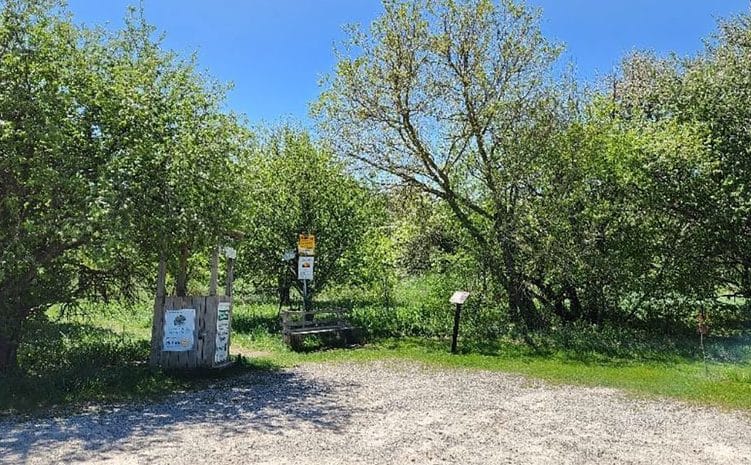FERGUS – The Pierpoint Fly Fishing Nature Reserve was declared a cultural heritage landscape by Centre Wellington council at its Dec. 18 meeting and is now protected by bylaw.
The move follows months of research about the property at the corner of Lamond and Anderson streets on the banks of the Grand River.
The Pierpoint Fly Fishing Nature Reserve has direct associations with Richard Pierpoint, who was designated a National Historic Person by Parks Canada in 2020 in recognition of his life experience, hardships and contributions as a Black Loyalist in Upper Canada.
Pierpoint was a former enslaved person and was granted the land for his military service as part of the War of 1812.
“The property has been identified as a stopping point, a place of rest and refuge, for Black individuals and families on their own journey to set down roots in what was known as the Queen’s Bush to the north, along the Garafraxa Road,” states a report from senior development planner Deanna Maiden.
Pierpoint and his property are “part of the larger story of waves of Black settlement and displacement in Upper Canada in the late 18th and early to mid-19th century,” the report states.
“The subject property has direct associations with historical themes determined to be important to the development of the Township of Centre Wellington.”
As well, the property has more recently been used for fly fishing and “is part of the long history of environmental conservation efforts in Centre Wellington and has developed into a site of commemoration, recreation, stewardship and community development.
“The property has the potential to yield information that contributes to an understanding of early Black land ownership, settlement, and displacement in Upper Canada…” the report adds.
Councillor Bronwynne Wilton noted the Pierpoint Park Neighbourhood Group appreciates that the property is now designated.
But she worried that a future Highway 6 bypass on county and township maps still appears to run through the property.
Managing director of infrastructure services Colin Baker said the Transportation Master Plan identified the need for a bypass, “but the precise location of the crossing will be evaluated through a future Class A environmental assessment,” he said.
With this new designation, the park should be protected from future development, including roads and bridges, he said.
Wilton seemed happy to hear that, noting, “This is a special and unique part of Centre Wellington.”




